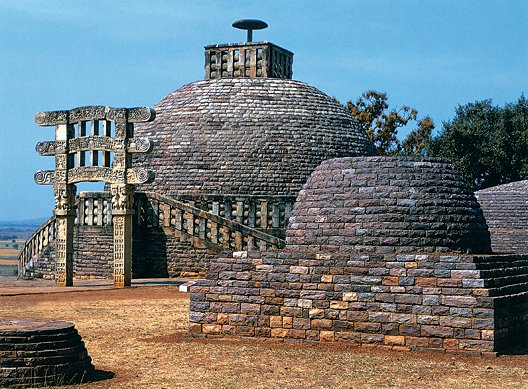86. Stupa III, Sanchi, Madhya Pradesh,
begun in the 3rd century BCE (India)
The Buddhist stupa typology evolved from domical earth mounds over the tombs of holy men, which were the focus of pilgrimages. Its form was standardised by the emperor Asoka, the first Indian ruler to be converted to Buddhism. The domical form of the building is often said to represent the vault of heaven. As here, a balustraded fence (harmika) typically encloses the stupa, symbolising the enclosed garden where the Buddha achieved enlightenment. This is further referenced by the stylised bodhi tree (a three-tiered, umbrella-like motif known as a chatra) on top of the mound, which at the same time emphasises the symbolic role of the stupa as an axis mundi, or vertical route of ascension to the heavenly realm. Four doorways, aligned roughly to the cardinal directions, represent the four winds. Monumental gateways, or toranas, covered with low-relief carvings of Buddhist imagery, provide access points. A short stairway on the south side leads to the circular walkway used by circumambulating priests. Like many other stupas, this important early example was attached to a monastery, of which only vestiges now remain.
